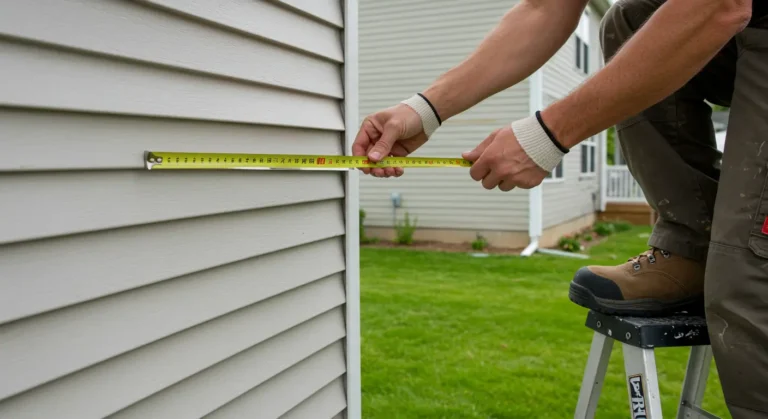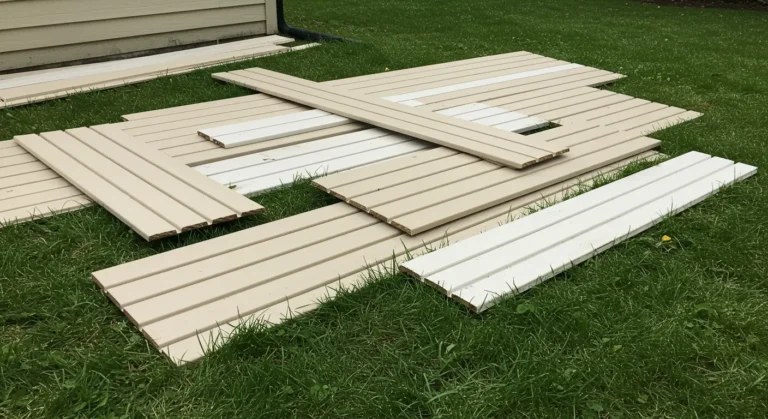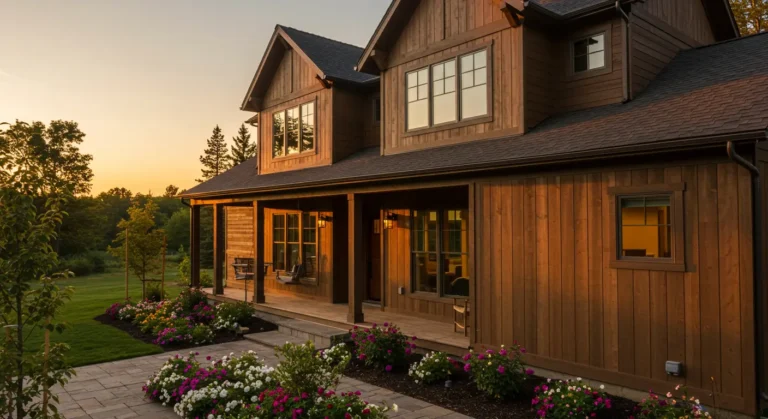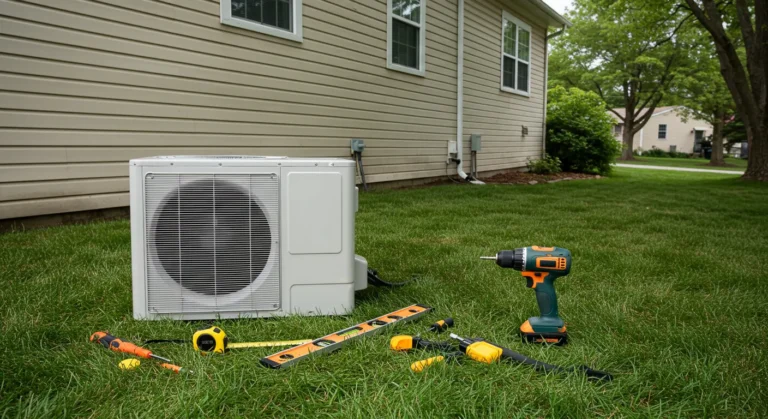When it comes to choosing siding for your home, the decision can feel overwhelming. With so many materials, styles, and finishes available, how do you find the perfect fit? Enter lap siding; one of the most enduring and visually appealing siding options available today. With a rich history, classic charm, and flexible installation across different materials, lap siding remains a top choice for homeowners nationwide.
In this guide, we’ll cover what lap siding is, its many styles, pros and cons, material options, maintenance tips, and how it compares to other siding types, especially for homes in Southern climates like Louisiana. Whether you’re a homeowner upgrading your exterior or a DIY renovator planning a siding replacement, this guide will give you the knowledge to make the best decision for your home.
What Is Lap Siding?
Lap siding refers to a type of horizontal siding where long boards are installed to overlap one another, creating a tight seal that effectively sheds water. This design is both functional and decorative, and its popularity spans centuries from colonial times to contemporary homes.
Lap siding is a key option among the types of house siding that homeowners can choose from today.
Brief History and Usage
Lap siding traces its roots back to early American settlers, who used hand-sawn wood boards to protect their homes from the elements. Over time, its design evolved to incorporate more styles and materials, but the fundamental concept remains the same: staggered boards laid horizontally to form a durable and attractive cladding.
Where Is It Used?
- Residential homes (traditional and modern)
- Coastal and humid regions (e.g., the Southern U.S.)
- Renovation projects seeking historical accuracy
- New constructions looking for timeless curb appeal
This siding style not only improves insulation but also boosts resale value, making it a practical and aesthetic upgrade.
Types of Lap Siding
There are several variations of lap siding, each with unique visual and structural properties. Understanding the differences can help you match the style to your home’s architecture.
1. Clapboard (Traditional Lap Siding)
This is the most common form. Clapboard siding features boards that are thicker at the bottom than the top, creating a wedge shape that overlaps cleanly.
- Look: Classic and symmetrical
- Best for: Colonial, Cape Cod, and traditional homes
2. Dutch Lap
Dutch lap has a distinct groove at the top of each board, adding shadow lines that create more visual depth.
- Look: Slightly more decorative than clapboard
- Best for: Colonial Revival homes, mid-century homes
3. Shiplap
Shiplap boards feature rabbeted edges that allow them to fit together tightly, resulting in a flush surface.
- Look: Smooth, modern, seamless
- Best for: Farmhouse exteriors and interiors
4. Beaded Lap
This style includes a rounded bead at the bottom of each board for added ornamentation.
- Look: Decorative and refined
- Best for: Southern-style homes, Victorian facades
Comparison Chart of Lap Siding Types
| Style | Appearance | Common Uses | Distinct Feature |
| Clapboard | Flat, traditional | Historic homes | Tapered boards |
| Dutch Lap | Deep shadows | Colonial homes | Decorative notch |
| Shiplap | Flush and smooth | Farmhouse, modern homes | Rabbet joint fit |
| Beaded Lap | Elegant detailing | Southern-style homes | Rounded bead at board bottom |
By mixing different styles and materials, lap siding can suit any architectural theme from rustic charm to contemporary elegance.
Lap Siding Materials
The performance and aesthetics of your lap siding will heavily depend on the material you choose. Here’s a breakdown of the most commonly used options:
Wood Lap Siding
Wood offers a warm, natural aesthetic and can be stained or painted in any color.
- Pros: Timeless look, customizable, eco-friendly
- Cons: Prone to rot, insect damage, and high maintenance
- Best for: Homeowners who want a classic appearance and don’t mind upkeep
Fiber Cement Lap Siding
Made of cement, sand, and cellulose fibers, this siding mimics the look of wood but is more durable.
- Pros: Fire-resistant, moisture-resistant, low maintenance
- Cons: Heavier, more expensive to install
- Best for: Humid and storm-prone regions like Louisiana
- Learn more about fiber cement siding
- Browse options from Fiber Cement Lap Siding (James Hardie)
Vinyl Lap Siding
One of the most popular and affordable choices, vinyl lap siding is made from PVC (polyvinyl chloride) and comes in various colors and textures.
- Pros: Budget-friendly, easy to maintain, no painting required
- Cons: Less durable, may warp in high heat
- Best for: Budget-conscious homeowners
Engineered Wood Lap Siding
A hybrid option made from compressed wood fibers and resins, offering the appearance of wood with improved durability.
- Pros: Lightweight, often pre-primed or painted, insect-resistant
- Cons: Not as long-lasting as fiber cement
- Best for: Homeowners looking for a middle ground between wood and cement
Pros and Cons of Lap Siding
✅ Pros
- Visual Versatility: From modern to farmhouse to coastal styles
- Improves Curb Appeal: Often increases home resale value
- Wide Material Selection: Customize your look and budget
- Durability: High-performing options for harsh climates
- Ease of Repair: Individual boards can be replaced
❌ Cons
- Maintenance Required: Especially for wood and engineered products
- Installation Must Be Precise: Incorrect installation can lead to water infiltration
- Cost Varies Widely: High-end materials can increase total project cost
- Not Ideal for Vertical Applications: Limited to horizontal installations
Lap Siding vs. Other Siding Types
Let’s explore how lap siding stacks up against other popular siding options:
Lap Siding vs. Board and Batten
- Lap: Installed horizontally; classic look
- Board and Batten: Installed vertically; more rustic
- Verdict: Choose board and batten for farmhouse charm, lap siding for timeless elegance
Lap Siding vs. Vinyl Panels
- Lap: Available in multiple materials and profiles
- Vinyl Panels: Typically molded as large, single sheets
- Verdict: Lap siding offers more style flexibility; vinyl panels are cheaper and faster to install
Lap Siding vs. Stucco/Brick
- Lap: Lightweight, versatile, easier to update
- Stucco/Brick: Heavy-duty, high thermal mass
- Verdict: In humid climates, lap siding is easier to maintain and repair
Climate Considerations for Louisiana
Homes in Louisiana are exposed to high humidity, heat, and storms, making fiber cement lap siding and engineered wood more suitable than untreated wood or low-grade vinyl. These options offer mildew resistance, impact protection, and moisture control, essential for Southern homes.
Maintenance and Longevity
How long your lap siding lasts depends on material quality, climate, and upkeep:
| Material | Expected Lifespan | Maintenance Level |
| Wood | 20–40 years | High |
| Fiber Cement | 30–50+ years | Low |
| Vinyl | 20–30 years | Low |
| Engineered Wood | 20–40 years | Moderate |
Maintenance Tips:
- Repaint or reseal wood every 5-7 years
- Inspect caulking and joints annually
- Power wash vinyl or fiber cement every 12-18 months
- Look out for rot, warping, or discoloration
Summary: Is Lap Siding Right for Your Home?
Lap siding remains one of the best siding options for homeowners who want a combination of style, durability, and performance. With styles to match every architectural design and materials suited to nearly any climate, it’s no surprise lap siding is a go-to for both builders and homeowners.
Key Takeaways:
- Offers timeless visual appeal
- Flexible across materials and price ranges
- Ideal for humid climates when using fiber cement or engineered wood
- Increases curb appeal and potentially your home’s value
If you’re considering lap siding for your home, a professional inspection can help determine the best type and material based on your home’s needs and your budget.
👉 Book a Free Siding Inspection Today
FAQ: Common Questions About Lap Siding
What is lap siding used for?
Lap siding is used as protective exterior cladding for homes. Its overlapping design prevents water intrusion while enhancing the home’s visual appeal. It also improves insulation and protects structural components from weather exposure.
What is the most common type of lap siding?
Clapboard siding is the most common. Its beveled design and easy installation have made it a favorite for traditional homes across the U.S.
How long does lap siding last?
Lifespan varies by material:
- Wood: 20-40 years
- Fiber Cement: 30-50+ years
- Vinyl: 20-30 years
- Engineered Wood: 20-40 years
Proper installation and maintenance can significantly extend its service life.
What is the difference between shiplap and lap siding?
Shiplap uses rabbet joints to create a flush, seamless appearance, often used indoors and outdoors. Traditional lap siding has a visible overlap, creating defined horizontal lines and better water-shedding.
Is lap siding better than vinyl siding?
It depends on your climate and budget.
- Lap siding (fiber cement or engineered wood) is more durable and better suited for extreme climates.
- Vinyl siding is cheaper and low-maintenance but may not perform well in intense heat or storms.




